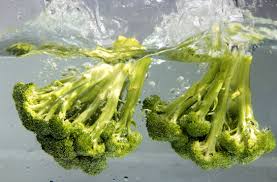
You’ve probably heard it at the doctor’s office, on televised public health ads, and when you browse Internet health sites: eating a high fiber diet is good for you.
Great advice. But what exactly is a high fiber diet and why is it good for you? Read on to find out.
What is a high fiber diet?
According to the Dietary Guidelines for Americans (health.gov), women should aim to eat about 25 grams of fiber daily and men should aim for 38 grams daily. According to the National Cancer Institute, everyone should aim for 20-30 grams of fiber daily (http://www.aces.edu/dept/extcomm/specialty/dietary.html).
As you can see, there’s a bit of variation in the recommendations. But one thing is clear: most Americans eat 15 grams or less of fiber daily. Regardless of which recommendation you’re following, that is not enough.
To increase the amount of fiber in your diet, you should consume more fruits, vegetables, and whole grain breads. Some examples of high fiber foods include:
- Fruits: raspberries, pears including the skin, apples including the skin, bananas
- Beans, such as lima beans, black beans, or lentils
- Grains: whole wheat bread, oatmeal, popcorn
- Nuts: almonds, pecans
- Vegetables: broccoli, brussels sprouts, potato with skin
How does fiber work?
Fiber comes from parts of plants the body can’t break down and absorb (unlike other parts of our food, such as carbohydrates or protein). Thus, the body pushes fiber through the digestive tract and out of the body mostly intact.
There are two types of fiber: soluble and insoluble.
Soluble fiber dissolves in water. This type of fiber helps lower cholesterol and blood sugar levels (more about that later).
Insoluble fiber does not dissolve in water, so it promotes the movement of material through the digestive system and helps bulk up stools.
Many plant-based foods contain both soluble and insoluble fiber. The ratio of the two varies from food to food.
What are the benefits of a high fiber diet?
-
Smooth, regular bowel movements.
If you struggle with mild constipation, more fiber may be just the ticket. Fiber bulks up your stool by increasing the weight and volume. It also makes it softer. This makes for a smooth, easy-to-pass stool. The really interesting thing about fiber is that not only can it help with constipation, it can also help with diarrhea. This is because fiber helps regulate the water content so the stool becomes more solid, smooth and easy-to-pass. Win-win!
-
Helps prevent obesity.
You probably noticed in the (not comprehensive) list above that high fiber foods also happen to be foods that are generally considered “good for you.” These foods are high in nutritional content and low in calories. Eating them will help you feel full with fewer calories and keep you feeling full longer. And that is a recipe for maintaining a healthy weight.
-
Better digestive health.
Smooth, regular bowel movements help with other aspects of digestive health, such as decreasing symptoms associated with hemorrhoids. It can also help prevent pockets in your colon called diverticulosis. These pockets are usually not harmful to your health; however, if they become infected, a condition called diverticulitis, you will need antibiotics. In some cases, diverticulitis can cause more serious complications. Also, a high fiber diet may reduce your risk for colorectal cancer.
-
Helps lower cholesterol.
Fiber can help lower total cholesterol by lowering LDL or “bad” cholesterol. Fiber may have some other heart healthy benefits such as lowering overall inflammation in the body.
-
Helps keep blood sugar in the normal range.
Fiber has also been shown to help regulate blood sugar levels to prevent spikes in blood sugar. It may even help prevent the development of type 2 diabetes.
As you can see, fiber has a myriad of health benefits and not just for your digestive system. Munch away on high fiber foods knowing you’re doing your body a world of good.

Share This